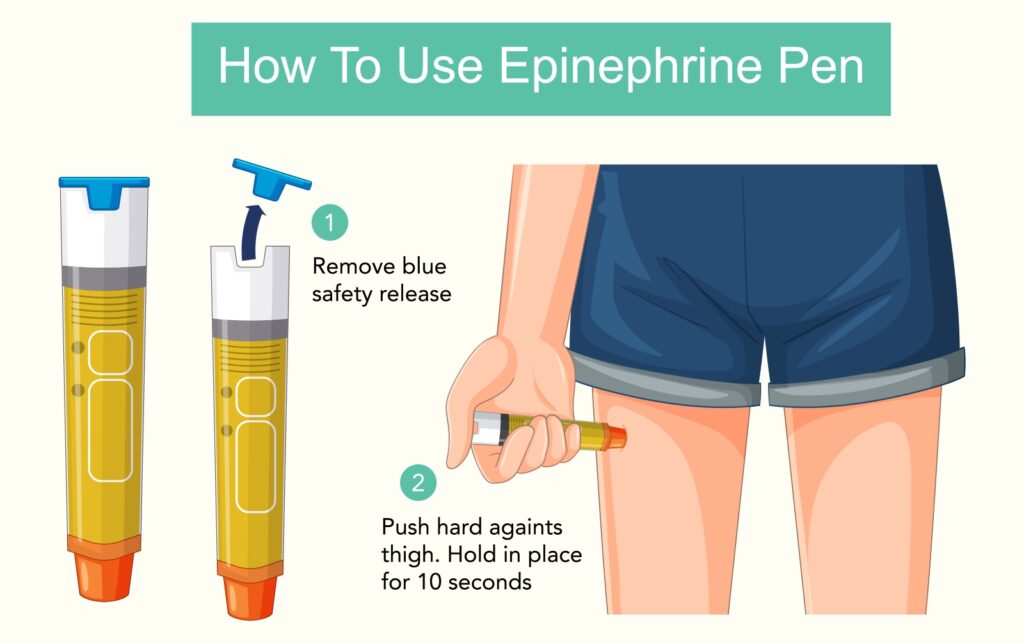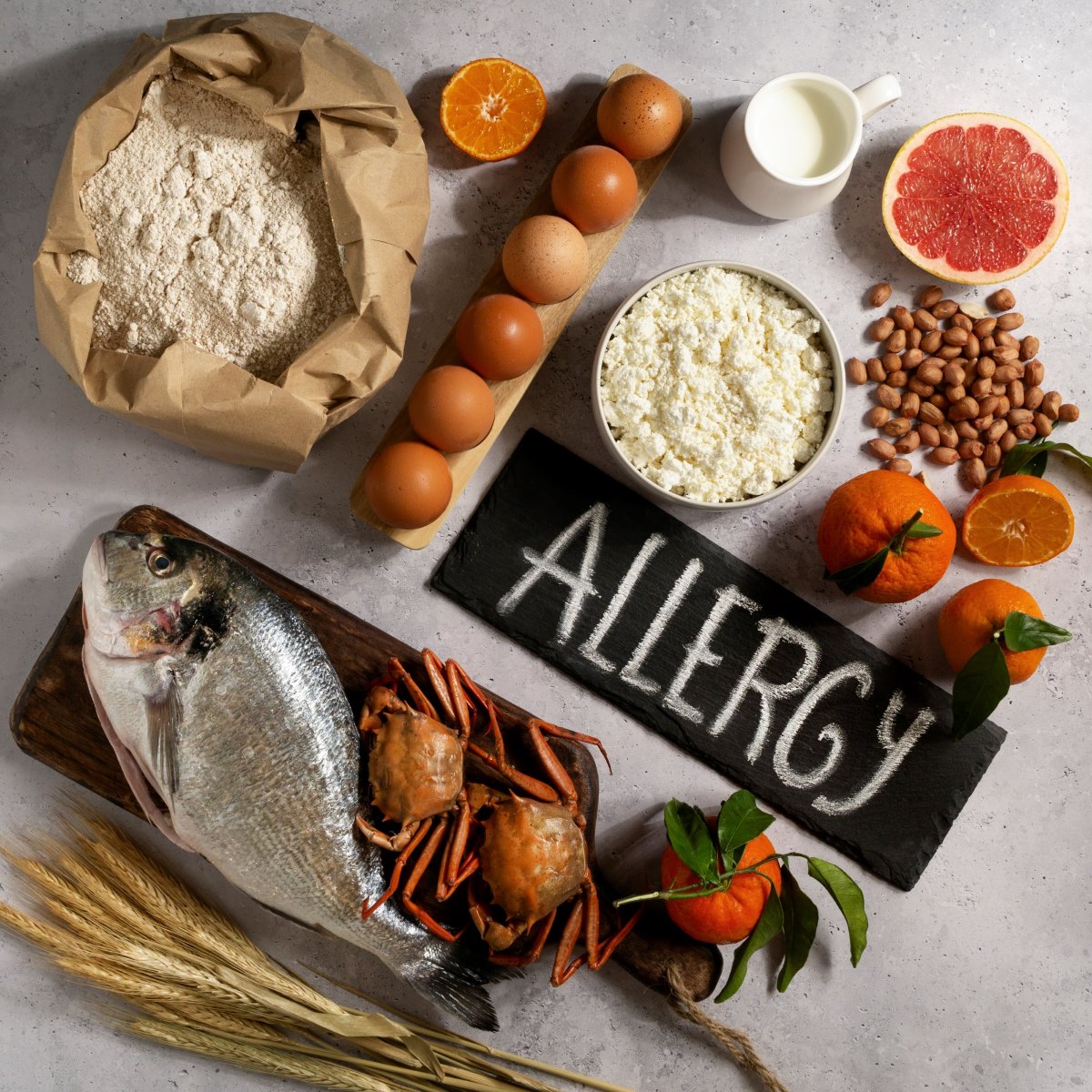Overview
Our immune system is a natural defense against infections and dangers to our health. When the immune system overreacts to food molecules, it’s called a food allergy. Even a tiny amount of certain food can cause symptoms such as hives, swollen airways, and life-threatening reactions, such as anaphylaxis.
In recent decades, food allergy has imposed a global socioeconomic burden. Almost 6% of the U.S. population has a food allergy. The latter affects people of all ages, ethnicities, sexes, and socioeconomic strata.
There are also non-immune food reactions that rarely cause severe complications. Examples are lactose intolerance, heartburn (gastroesophageal reflux), and sensitivity to caffeine. These reactions are far more common than food allergies.
The classic food allergy is also called an immunoglobulin E (IgE)-mediated allergy. Our immune system produces antibodies (IgE) against proteins of certain foods. When the person is exposed to that food protein again, IgE binds to the food protein and causes the release of different chemicals (e.g. histamine). These chemicals are responsible for food allergy symptoms.
Signs and symptoms
Food allergy symptoms usually develop within minutes to two hours after exposure. Severe symptoms develop only by eating. Skin exposure to food proteins can cause only mild symptoms, like hives or a rash at the site of contact.
The common symptoms are:
- Skin—Itching, flushing, hives (itchy bumps, also called “urticaria”), or swelling (angioedema)
- Eyes—Itching, tearing, redness, or swelling of the skin around the eyes
- Nose and mouth—sneezing, runny nose, nasal congestion, swelling of the lips or tongue, or increased mucus production
- Lungs and throat—Difficulty getting air in or out, chest tightness, repeated coughing, wheezing or other sounds of labored breathing, throat swelling or itching, hoarseness or change in voice, or a sensation of choking.
- Heart and circulation—Dizziness, weakness, fainting, changes in heart rate (fast, slow, or irregular), or low blood pressure
- Digestive system—Nausea, vomiting, abdominal cramps, or diarrhea
- Nervous system—Dizziness, lightheadedness, anxiety, confusion, or a sense of impending doom
Specific presentations
Anaphylaxis
Anaphylaxis is the most severe and life-threatening manifestation of food allergy. Symptoms of anaphylaxis are
- Airway swelling and obstruction
- Swollen tongue and throat that lead to breathing difficulties
- shock (severe drop of blood pressure)
- tachycardia (rapid pulse) and arrhythmia (irregular or abnormal heart rhythm)
- cardiac arrest (heart stops beating)
- dizziness, lightheadedness, and loss of consciousness
Anaphylaxis usually develops within 50-60 minutes after eating allergenic food. Rarely does it develop after hours. Emergency treatment is crucial for anaphylaxis. If left untreated, anaphylaxis could be fatal. The treatment is epinephrine. If you or your child is diagnosed with a food allergy that has the potential of causing anaphylaxis, your doctor should prescribe emergency epinephrine to keep it with you all the time. Emergency epinephrine comes in 2 forms: an autoinjector (Auvi-Q, EpiPen) and a nasal spray (Neffy). If you have epinephrine, you should use it immediately.

Anaphylaxis is a medical emergency. You should call 9-1-1 even after epinephrine injection.
Allergic rhinitis and conjunctivitis
Food allergies can trigger allergic symptoms of the nose, eyes, and throat: runny nose, nasal congestion, sneezing, nasal itching, itchy or watery red eyes, itchy mouth, tongue, or throat. These symptoms generally occur as a part of a systemic food allergy reaction.
Oral allergy syndrome
Oral allergy syndrome, or pollen-food allergy syndrome, is a condition when a person with a pollen allergy can develop a food allergy after eating raw fruits or vegetables. Allergic reaction is prompt. Symptoms include swelling of the tongue and lips, throat and mouth itching, and irritation. It’s proven that certain pollens and foods cross-react, e.g., birch cross-reacts with apple, peach, carrot, celery, peanut, hazelnut, etc. Symptoms develop only after eating uncooked food; the exceptions are nuts.
Oral allergy syndrome is generally localized in the mouth and throat. Rarely, systemic symptoms, like vomiting and coughing, can develop. Anaphylaxis is even more rare but possible.
Food-dependent exercise induced anaphylaxis
Food-dependent exercise-induced anaphylaxis is a rare type of anaphylaxis. The cause is the combination of taking exercise after eating or drinking certain foods or drinks. Symptoms develop when the exercise follows eating within four hours. Actually, food does not cause allergies without exercise, or vice versa.
Causes
A food allergy is caused when the immune system overreacts to food proteins. You can have an allergy to any food.
The most common allergic foods are:
- cow’s milk and dairy
- eggs
- peanuts, soybeans, peas, and chickpeas
- tree nuts (walnuts, hazelnuts, almonds, pecans, cashews, pistachios, and Brazil nuts)
- Crustacean shellfish (prawns, crabs, and lobsters)
- wheat
- soy
- sesame
Diagnosis
When you think you may have a food allergy, see your GP. During a medical history, your clinician will ask you questions about your symptoms, diet, and medications that you take. Your GP may order blood tests or refer you to an allergist. Generally, allergy testing is indicated for classic food allergy diagnosis.
Skin testing—skin is scratched/pricked with a tiny device that is coated with food extract or fresh food. The test is done by a trained professional, usually on the forearm or upper back. A hive appears in the scratched place within about fifteen minutes. The results of the test are analyzed along with a history, and additional tests may be needed.
Blood test—this test reveals the amount of IgE antibodies to certain foods in your blood. This test is also interpreted by the allergy specialist. along with the medical history and other tests.
Elimination diet: An allergist or dietitian designs a special diet with complete removal of certain foods/food groups. Thus, the specialist determines if you have a food allergy or not. After a prearranged amount of time, the specialist returns a suspicious food to your diet and watches your symptoms.
Other strategies of determining allergens are also used: food diary, food challenges, etc.
Treatment
You should avoid food that causes your allergy symptoms.
An allergy specialist or a GP may prescribe medications to manage your allergy symptoms.
- Antihistamines for mild symptoms
- epinephrine for anaphylaxis
Sources:
UpToDate
American college of Allergy, Asthma, & Immunology
Mayo Clinic







